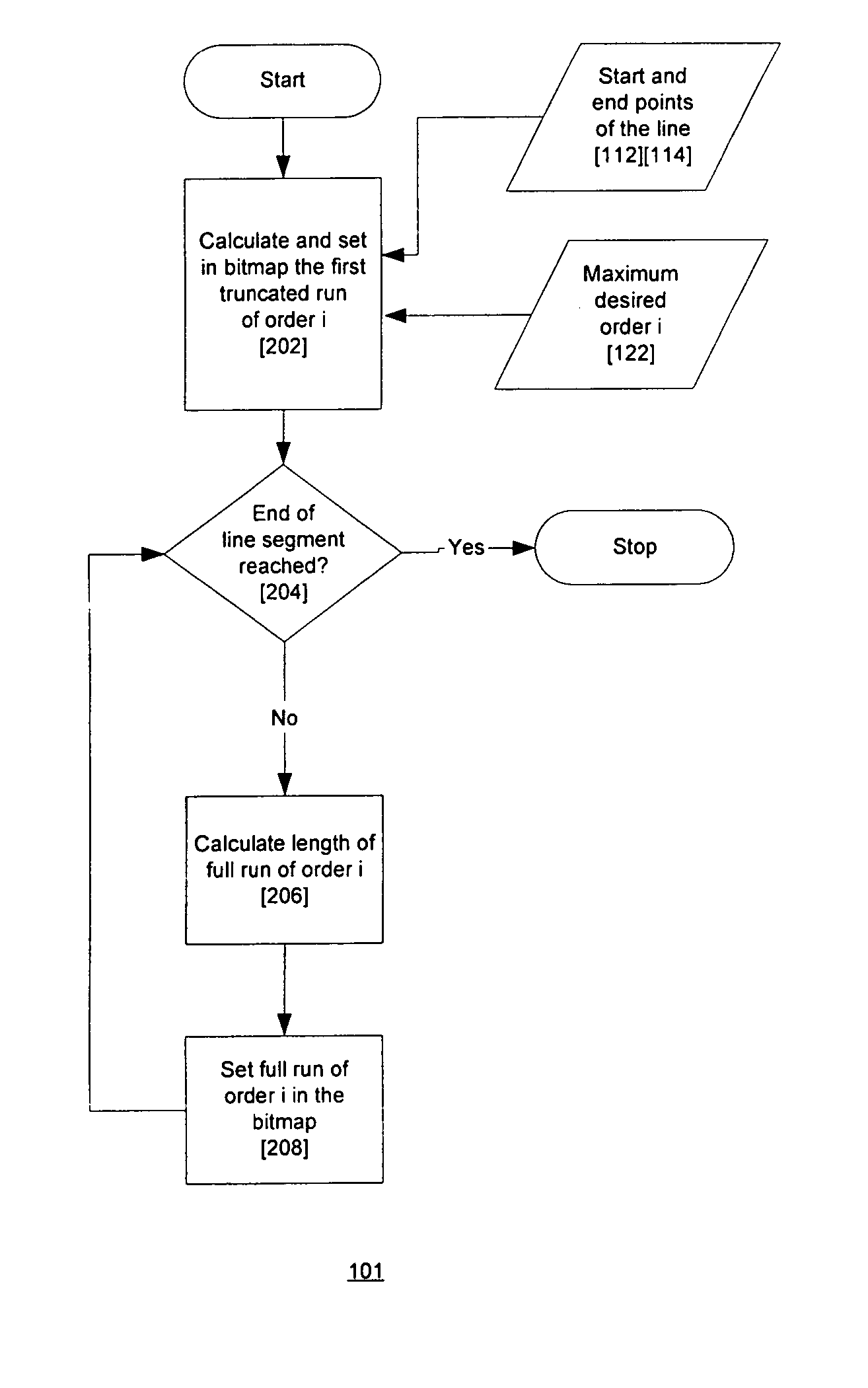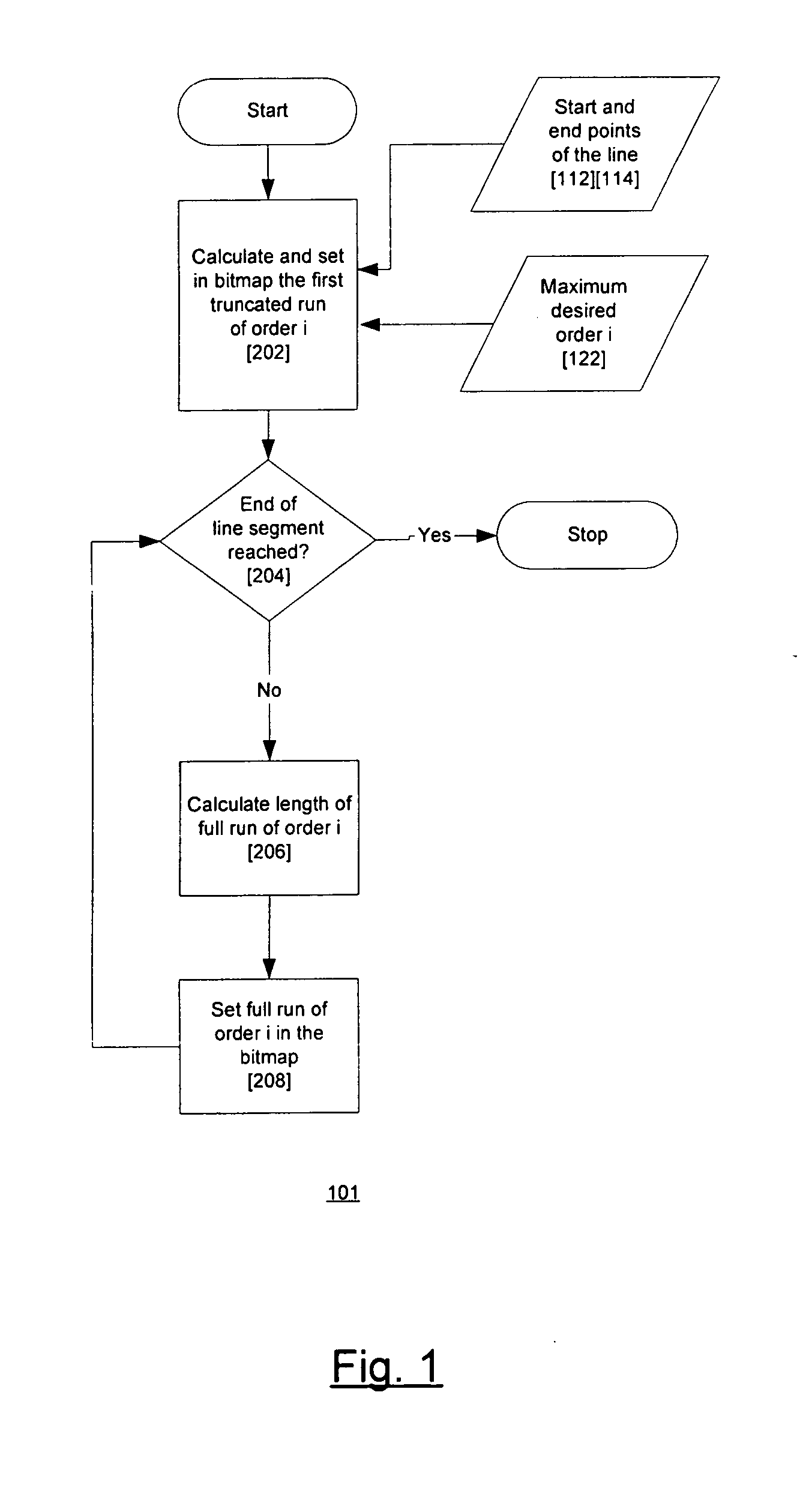Using line struture information to enhance line drawing in digital systems
a line struture and digital system technology, applied in the direction of anti-aliasing details, instruments, computing, etc., can solve the problems of inaccurate line drawing, high cost, and subject to rounding errors
- Summary
- Abstract
- Description
- Claims
- Application Information
AI Technical Summary
Problems solved by technology
Method used
Image
Examples
Embodiment Construction
The following Detailed Description includes the complete Detailed Description of the parent of the present patent application; the disclosure which is new in this application begins at the section titled Additional line drawing techniques that use the line structure information.
Overview of Line Drawing with the Invention: FIG. 1
FIG. 1 is a flowchart [101] that provides an overview of how a line segment may be drawn using this invention. Starting parameters include the maximum order of the runs to be used in drawing the lines [122] and the start and endpoints of the line [112,114]. The maximum order can be predefined by the manufacturer of an apparatus based on the invention, calculated based on the characteristics of the system or based on the length of the line. In the preferred embodiment the maximum order of the runs [120] is set to two.
The line segment defined between the starting point [112] (x0, y0) and the end point [114] (x1, y1) consists of, at most, three sets of runs...
PUM
 Login to View More
Login to View More Abstract
Description
Claims
Application Information
 Login to View More
Login to View More - R&D
- Intellectual Property
- Life Sciences
- Materials
- Tech Scout
- Unparalleled Data Quality
- Higher Quality Content
- 60% Fewer Hallucinations
Browse by: Latest US Patents, China's latest patents, Technical Efficacy Thesaurus, Application Domain, Technology Topic, Popular Technical Reports.
© 2025 PatSnap. All rights reserved.Legal|Privacy policy|Modern Slavery Act Transparency Statement|Sitemap|About US| Contact US: help@patsnap.com



